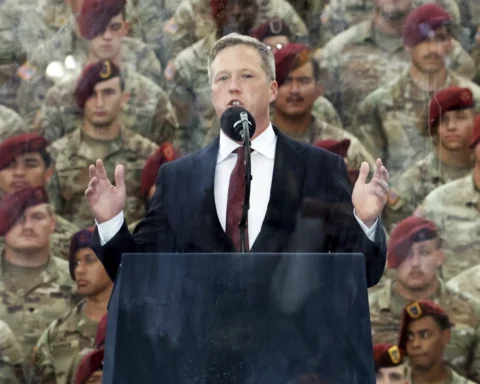The Arctic Dilemma: Isolation vs. Influence
In mid-July, U.S. President Donald Trump introduced a dramatic escalation in Washington’s approach to Russia: new secondary tariffs that would take effect in 50 days unless President Vladimir Putin agreed to peace talks and ended the war in Ukraine. A few days later, the Trump administration shortened that window to just under two weeks—a bold and confrontational stance aimed squarely at Moscow.
While this marks a turning point in U.S. foreign policy, the strategy carries unintended consequences—particularly in regions where American and Russian interests are deeply entangled. Chief among these is the Arctic, a region of growing geopolitical importance and fierce strategic competition over oil, gas, shipping routes, and environmental access. As noted by scholars Christopher McKnight Nichols and Eda Ayaydin of Ohio State University, the Arctic is not simply a passive backdrop to global power struggles—it is a highly complex zone of entangled interests and shared dependencies.
Russia, which holds sway over more than 50% of Arctic territory, remains the dominant power in the region. China, too, is making calculated moves to assert influence. In response, the U.S. has started shifting away from multilateralism in the Arctic, opting instead to assert new forms of strategic presence. But this shift—especially if it involves the full diplomatic and institutional isolation of Russia—threatens to accelerate Russian-Chinese cooperation in the High North, weakening U.S. influence and putting allied Nordic nations such as Norway, Finland, Denmark, Iceland, and Sweden at risk.
To counter Chinese assertiveness while preserving long-term U.S. leverage, a policy of selective cooperation with Russia is not only more viable but also more aligned with decades of Arctic diplomacy. A purely confrontational approach may play well politically in the short term, but in the Arctic, where shared geography and institutional memory shape behavior, such a strategy could destabilize critical balances.
A History of Strategic Restraint
For more than 40 years, the U.S. approach to the Arctic has been characterized by ambiguity and pragmatism—not confrontation. After Soviet leader Mikhail Gorbachev’s 1987 “zone of peace” speech in Murmansk, the United States adopted a similar posture, envisioning the Arctic as a region governed by cooperation rather than conflict. This culminated in the 1996 creation of the Arctic Council, an institution explicitly designed to avoid military entanglements and to foster collaboration on environmental protection, scientific research, and Indigenous rights.
The U.S. was a foundational player in that architecture. By leaving security issues off the table, Washington enabled functional cooperation with Russia and other Arctic nations. This model of “Arctic exceptionalism” worked not because the region was inherently peaceful, but because diplomacy and institutional coordination made it so.
However, this equilibrium has begun to erode. During Trump’s first term, the U.S. began shifting its Arctic posture from consensus-driven diplomacy to hardline competition. In 2019, for the first time in history, the Arctic Council failed to issue a joint declaration after the U.S. delegation refused to endorse climate change language. Then–Secretary of State Mike Pompeo delivered a highly politicized speech in Finland warning of Chinese expansion and Russian militarization—effectively transforming the Arctic Council from a forum of soft power into a platform for strategic posturing.
This shift continued into Trump’s second term. The administration’s symbolic provocations—talks about buying Greenland, musings on annexing parts of Canada, withdrawal from the Paris Agreement—were more than rhetorical flourishes. They signaled a deep transformation of how the U.S. viewed its role in the region: no longer as a steward of stability but as a disruptor of norms.
Why Pragmatism Must Prevail
Despite current tensions, the U.S. and Russia remain bound together in the Arctic by geography and necessity. They share a maritime boundary in the Bering Sea and depend on joint frameworks for fisheries management, search and rescue coordination, and maritime safety. These overlapping dependencies are not easily unwound. In fact, they are the very infrastructure that has prevented crisis escalation in the Arctic for decades.
A purely adversarial U.S. approach would erode these mechanisms of cooperation, increasing the risk of misunderstanding and accident. Arctic deterrence, unlike in other global theaters, is less about military dominance and more about mutual awareness and management. That’s what makes the region an outlier—and a potential laboratory for strategic realism. Selective engagement in Arctic affairs is not a concession; it’s a tactical safeguard.
According to Foreign Policy, preserving institutions like the Arctic Council is one of the few low-cost, high-return tools still available to the United States. Continuing joint efforts on climate monitoring, environmental data exchange, and maritime coordination with Russia—especially in areas like the Bering Sea—helps reduce risks and keeps China from exploiting a strategic vacuum.
If the U.S. completely severs these ties, it will likely push Russia further into Beijing’s orbit. That would significantly alter the balance of power in the High North, leaving the United States outmaneuvered in a strategic environment it helped shape.
Trump’s aggressive new policy toward Russia may define the next chapter in American foreign relations. But history suggests that such chapters can be short-lived—measured in weeks or months. In contrast, damage done to fragile Arctic institutions can endure for years. Preserving targeted cooperation is not weakness—it’s a strategy to maintain leverage, protect allies, and avoid empowering America’s most significant rival: China.
In the end, the Arctic demands a posture that combines clarity with restraint. A U.S. grand strategy for the region should blend hard capabilities with flexible diplomacy. That may sound paradoxical under Trump’s leadership, but even symbolic gestures of cooperation can reaffirm the U.S. as both a power and a stabilizer in one of the world’s most critical frontiers.
This article was prepared based on materials published by Foreign Policy. The author does not claim authorship of the original text but presents their interpretation of the content for informational purposes.
The original article can be found at the following link: Foreign Policy.
All rights to the original text belong to Foreign Policy.


















